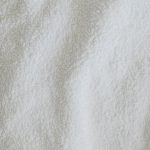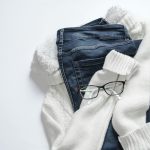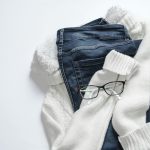When you consider materials for durability, Oxford fabric might not be the first that comes to mind, yet its unique properties deserve your attention. Its basketweave structure offers impressive abrasion resistance, making it ideal for demanding environments. Plus, the blend of cotton and synthetic fibers enhances its water resistance and UV protection, ensuring longevity. You might be surprised by its versatility across various applications, but there's more to uncover about how these features come together to create a reliable fabric for both everyday use and specialized needs. What makes Oxford fabric stand out in a crowded market?
Table of Contents
What Is Oxford Fabric?
Oxford fabric is a durable textile known for its unique basketweave structure, making it a popular choice for clothing and accessories. You'll find this fabric often used in dress shirts, trousers, and various bags due to its strength and versatility. It's woven from cotton or a cotton-blend, giving it a soft feel while maintaining its robust nature.
When you wear clothing made from Oxford fabric, you'll appreciate its breathability, which keeps you comfortable in different temperatures. The fabric's ability to hold dye well means you'll enjoy vibrant colors that last, even after multiple washes.
Oxford fabric's durability doesn't just shine in clothing; it's also great for accessories. The sturdy material is perfect for backpacks and luggage, ensuring they withstand daily wear and tear.
If you're looking for something that combines style and practicality, Oxford fabric is an excellent choice.
Unique Weave Structure
The unique basketweave structure of Oxford fabric not only enhances its durability but also contributes to its distinctive texture and appearance. This weaving technique involves intertwining two yarns in a crisscross pattern, resulting in a thick, resilient fabric that feels substantial yet lightweight.
You'll notice how this pattern creates a slight sheen, giving Oxford fabric a refined look that sets it apart from other materials. When you touch Oxford fabric, you'll appreciate the depth and richness of its surface. The combination of the weave and the fibers used—typically cotton or a cotton blend—creates a soft hand feel, making it comfortable for clothing and accessories.
This structure allows the fabric to drape beautifully, lending an elegant silhouette to garments. Moreover, the basketweave design is versatile enough to suit various applications, from casual shirts to formal wear. It's not just about aesthetics; the unique structure also means that the fabric can maintain its shape over time, resisting sagging or distortion.
Resistance to Abrasion
You'll find that the robust construction of Oxford fabric offers impressive resistance to abrasion, making it ideal for everyday wear and tear. This durability comes from its unique weave, which tightly interlaces fibers, forming a strong barrier against friction and rough surfaces.
Whether you're using it for clothing, bags, or upholstery, this fabric holds up exceptionally well against the constant rubbing and scraping that can cause other materials to wear out quickly. When you invest in items made from Oxford fabric, you can count on them to maintain their appearance and functionality over time.
You won't have to worry about unsightly fraying or thinning, as this fabric can withstand the rigors of daily life. For active lifestyles, it's a practical choice that demands minimal upkeep while delivering maximum performance.
Furthermore, Oxford fabric's resistance to abrasion is particularly beneficial in high-contact areas, such as elbows, knees, and the bottom of bags. If you're looking for a material that combines style and endurance, Oxford fabric should be at the top of your list.
You'll appreciate how well it stands up to the challenges of everyday use.
Water-Resistant Properties
When you consider the water-resistant properties of Oxford fabric, it's essential to understand how its composition affects performance.
You'll also want to know the testing methods used to measure water resistance and the best maintenance tips to ensure its longevity.
Let's explore these key points to help you make an informed choice.
Fabric Composition Impact
Understanding how the composition of Oxford fabric influences its water-resistant properties can help you choose the right material for your needs. The blend of fibers, typically polyester or nylon, plays a crucial role in determining how well the fabric repels water. These synthetic materials are often treated with a durable water repellent (DWR) finish, enhancing their resistance to moisture.
When considering water resistance in Oxford fabric, keep these factors in mind:
- Fiber Type: Polyester offers good water resistance, while nylon is stronger and more durable.
- Weave Structure: A tighter weave can prevent water from penetrating, improving overall performance.
- DWR Treatments: Regularly reapplying DWR treatments can maintain the fabric's water-repelling abilities.
Testing Water Resistance
Testing the water resistance of Oxford fabric involves assessing its ability to repel moisture under various conditions. To accurately measure this, you can utilize several methods, such as the spray test and the hydrostatic pressure test.
The spray test involves spraying water onto the fabric and observing how quickly it beads up or soaks in. If the water beads and rolls off, it indicates good water resistance.
In the hydrostatic pressure test, you'll place the fabric under a column of water and measure how much pressure it can withstand before water starts to seep through. A higher pressure rating means better water resistance. You'll want to ensure the fabric is clean and dry before conducting these tests, as contaminants can affect the results.
Additionally, pay attention to the fabric's seams and coatings, as these areas can often be the weakest points in water resistance.
When you're testing Oxford fabric, consider the intended use—whether for outdoor gear or everyday items. Each application may require different standards of water resistance, so you should tailor your approach accordingly. Understanding these factors will help you gauge the fabric's performance effectively.
Maintenance Tips for Longevity
To maintain the water-resistant properties of Oxford fabric, regularly clean it with mild soap and water to remove dirt and contaminants that can degrade its performance. This simple step can significantly extend the life of your fabric items. When cleaning, avoid harsh chemicals or abrasive materials, as they can strip away the protective coating.
Additionally, consider the following tips to ensure your Oxford fabric remains durable:
- Air Dry: Always air dry your items instead of using a dryer, as high heat can damage the water-resistant coating.
- Store Properly: When not in use, store your Oxford fabric in a cool, dry place, away from direct sunlight to prevent fading and deterioration.
- Reapply Water Repellent: Every few washes, reapply a water-repellent spray designed for synthetic fabrics to restore its protective layer.
UV Protection and Fading
Oxford fabric offers excellent UV protection, helping to prevent fading and maintain its vibrant colors over time. When you choose Oxford fabric, you're investing in a material that can withstand harsh sunlight without losing its aesthetic appeal. This is especially important if you plan to use it for outdoor furniture, awnings, or apparel.
The UV-resistant properties of Oxford fabric come from its tight weave and specialized treatments, which block harmful rays that can cause colors to fade. You'll find that items made from this fabric retain their original hues much longer than those made from less durable materials.
In practical terms, this means spending less time worrying about your items becoming dull and more time enjoying them. Whether it's a stylish patio set or a vibrant backpack, you can trust that Oxford fabric will keep its colors looking fresh.
Moreover, the UV protection extends the lifespan of the fabric itself, ensuring that your investment remains intact through various weather conditions. So, when you're looking for a reliable option that combines durability and aesthetic appeal, Oxford fabric is a smart choice for UV protection and fading resistance.
Easy Maintenance and Care
Caring for Oxford fabric is a breeze, allowing you to enjoy its durability without the hassle of complicated maintenance routines. Because of its tight weave, this fabric resists dirt and stains more effectively than many others. A quick wipe with a damp cloth is often all it takes to keep it looking fresh. If it's time for a deeper clean, you can toss it in the washing machine without worry, as it holds up well to regular washing.
Here are some key maintenance tips:
- Spot Clean: For minor spills, use a soft cloth and mild soap to prevent stains.
- Machine Washable: Most Oxford fabric items are safe to wash in cold water.
- Air Dry: Whenever possible, air dry your fabric to maintain its shape and integrity.
Applications in Various Industries
When you think about Oxford fabric, consider its versatility across various industries.
It's commonly used in outdoor gear manufacturing, where durability is a must, and in industrial upholstery solutions that require tough materials.
This fabric's resilience makes it an ideal choice for both functional and aesthetic applications.
Outdoor Gear Manufacturing
In outdoor gear manufacturing, durable Oxford fabric proves essential for creating resilient products that withstand harsh conditions. When you're out in the elements, you need gear that can handle everything nature throws at you, from rain to rough terrain. Oxford fabric's robust qualities, including water resistance and tear strength, make it a top choice for various outdoor applications.
Consider how it's utilized in:
- Backpacks: The sturdy material ensures your gear stays protected during hikes and travels.
- Tents: Oxford fabric's waterproof properties keep you dry in unexpected weather.
- Outdoor clothing: It provides durability and comfort, allowing you to move freely while staying protected.
Industrial Upholstery Solutions
Oxford fabric frequently serves as a reliable choice for industrial upholstery solutions across various sectors, thanks to its durability and versatility. You'll find that its robust nature makes it ideal for high-traffic environments, ensuring that it withstands wear and tear. Whether you're working in hospitality, healthcare, or automotive industries, Oxford fabric can meet your upholstery needs effectively.
Here's a quick overview of how Oxford fabric is applied in different industries:
| Industry | Application |
|---|---|
| Hospitality | Upholstery for chairs and booths |
| Healthcare | Medical equipment covers and seating |
| Automotive | Seat covers and interior trim |
| Marine | Boat cushions and upholstery |
| Commercial | Office furniture and partitions |
Frequently Asked Questions
Is Oxford Fabric Breathable for Warm Weather Wear?
Yes, Oxford fabric can be breathable for warm weather wear, especially when it's woven to allow airflow. If you choose lighter weights, you'll find it comfortable and suitable for hot days. Just check the fabric's specifications.
Can Oxford Fabric Be Recycled or Is It Biodegradable?
Oxford fabric isn't biodegradable, but it can be recycled, depending on its specific composition. If you're looking to dispose of it sustainably, check with local recycling facilities to see if they accept it.
What Is the Weight Range of Oxford Fabric?
Oxford fabric typically weighs between 150 to 600 grams per square meter. You'll find lighter options for bags and apparel, while heavier weights are used for more durable applications like tents and outdoor gear.
Does Oxford Fabric Come in Different Thicknesses?
Yes, Oxford fabric does come in different thicknesses. You'll find variations suited for various applications, from lightweight options ideal for shirts to heavier versions perfect for bags and outdoor gear. Choose based on your needs!
How Does Oxford Fabric Compare to Other Fabrics in Durability?
When comparing fabrics, you'll find that Oxford fabric generally offers superior durability against wear and tear. It's often more resistant to fraying and fading than many other materials, making it a great choice for long-lasting use.
- Why Open-Weave Scrim Is the Secret to Stunning Event and Canopy Designs - June 26, 2025
- Creating Large-Scale Art Installations With Scrim Fabric - June 26, 2025
- Scrim Fabric in Upholstery: Understanding Its Use as a Backing Material - June 26, 2025







